Of all the countries in South America, Peru is the most visited. And it is not hard to see why. During the 30 days we spent in Peru, we saw beautiful beaches, large, historic cities, world-class alpine treks, and ruins not just from the Inca, but from a number of ancient civilizations that have existed during Peru’s 10,000+ year history!
On a more somber note, my time in Peru was also marred by political unrest that only escalated during and after my visit. The unrest was driven by high costs of living, a president facing numerous allegations of corruption and incompetence, and an even more unpopular congress.
The unrest manifested itself in frequent protests and strikes that forced me to be flexible and keep changing. Shortly after I left, the unrest came to a head when the president tried to dissolve congress and was arrested by Peruvian authorities. His supporters then took to the streets in protest, leading to a violent and ongoing crisis that has engulfed the country, injured hundreds of Peruvians, and left thousands of tourists stranded in the country.
Hopefully, the situation will improve soon, so that the Peruvian people can go back to living their lives and so that people can continue to visit this amazing country.
Getting There
To get to Peru, we left on November 1st on an overnight bus from Cuenca, Ecuador to Máncora, Peru. I slept through most of the ride, but was woken up by the bus driver around 1 am to get off the bus and go through Customs and Immigration. Going through Customs took about 30 minutes, then I got back on the bus and went back to sleep until we rolled into Máncora around 7 am.
Getting around within Peru was quite easy as well. Like in Colombia and Ecuador, a nice yet surprisingly inexpensive bus system traversed most of the country’s major highways and connected many cities and towns. Additionally, informal transports called “colectivos” traverse many rural dirt roads to connect small towns, making it possible to visit most of the country via public ground transport.
The one major exception I know of is the city of Iquitos, which lies deep in the Peruvian Amazon. It is the largest city in the world not accessible by road; it can only be reached via plan or river boat. Sadly, I did not visit Iquitos, but after talking with some travelers who did, taking the week-long river boat ride to Iquitos is now on my South America bucket list.
What We Did
A map of the places I visited in Peru.
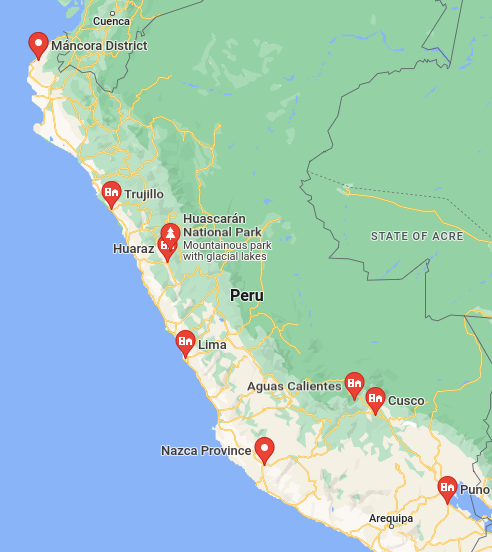
We did not know much about Máncora prior to arriving, but it was immediately clear that it was a tourist town where people came to party and hang out on the beach. We even saw some people on their way back home from a party when we hopped on the bus at 7 am.
For the next few days, we joined them. We surfed and hung out on the beach all day, then partied all night. Most of the people I met in Máncora were visiting from other parts of Peru, and as we learned, Peruvians party hard. And after three nights, we could no longer keep up, and took a night bus to the city of Trujillo.
Watching the sunset from a beach in Máncora.
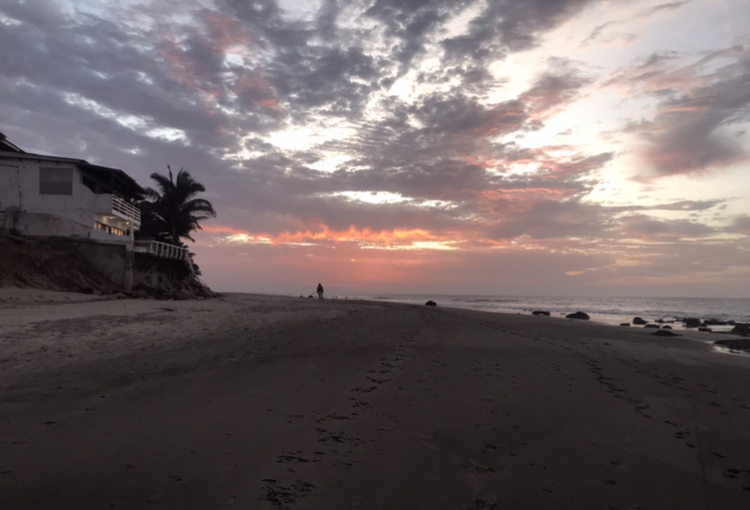
Trujillo, in my opinion, is one of the most underrated cities in Peru. Most of the tourists I met in Peru skipped the city, saying there was nothing to do and that it was too dangerous. But during our visit to Trujillo, we learned that it has beautiful beaches, is a major destination for Peruvian foodies, and is home to the ancient city of Chan Chan, the world’s largest city made entirely out of clay.
View from within Chan Chan. This picture is from Wikipedia.
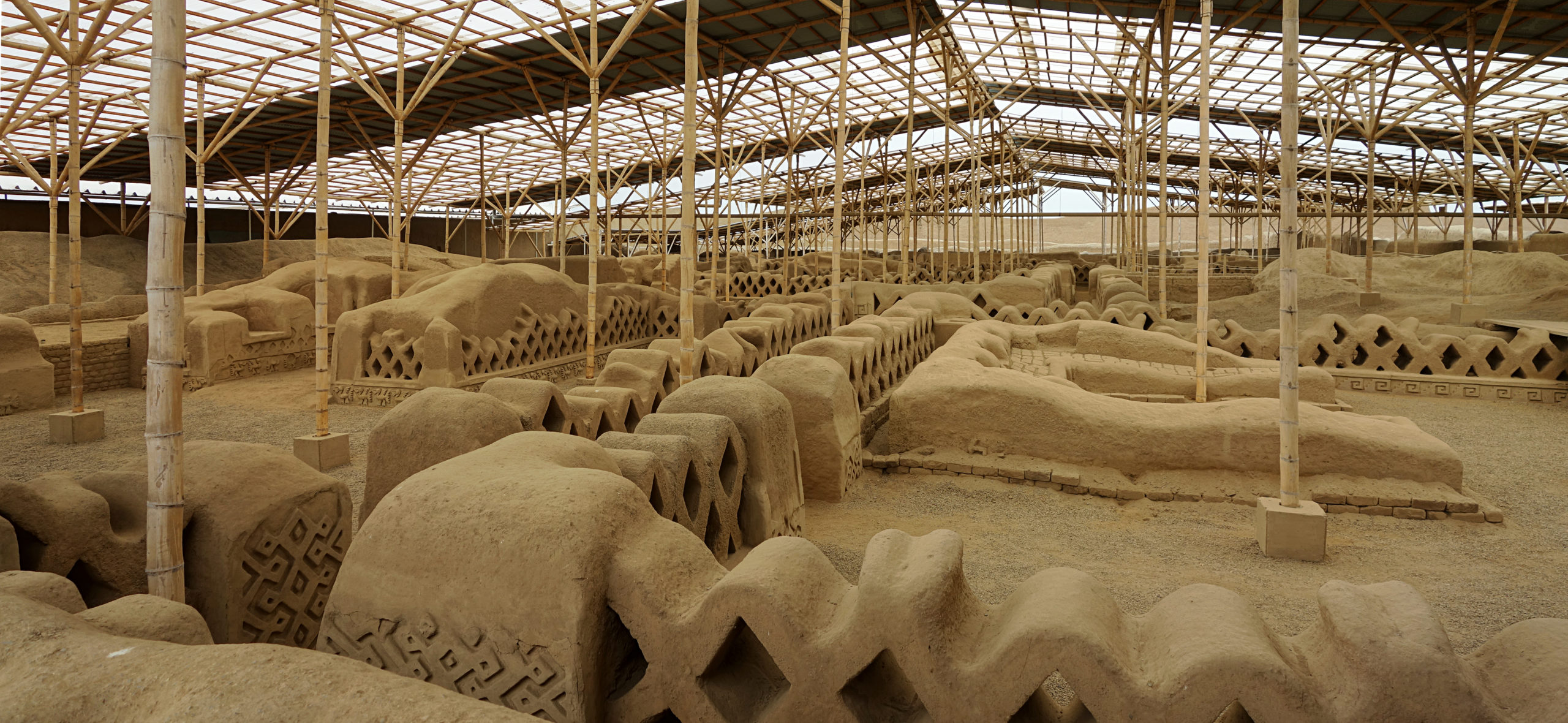
From Trujillo, we took yet another night bus to the Huaraz, the unofficial alpine trekking capital of the world. It gets its title due to its proximity to Parque Nacional Huascarán, which preserves the aptly-named Cordillera Blanca, or White Mountains. The Cordillera Blanca is the highest tropical mountain range in the world, and is famous for its massive glaciers, turquoise glacial lakes, and 20,000+ foot peaks.
View from Punta Union in Parque Nacional Huascarán.

In Huascarán, we hiked the Santa Cruz Trek, a 30ish mile route through some of the park’s most scenic terrain. We spent nearly a full day riding various colectivos to get in and out of the park, leaving us time to hike the trek in two 15-mile days.
WIth the steep ascents and descents required to traverse the world’s tallest tropical mountain range, the Santa Cruz Trek was quite challenging. It was also my first major backpacking trip since shattering my kneecap a little more than a year prior. But two surgeries and hundreds of hours of rehabilitation later, my knee held up well, leading me to declare the Santa Cruz Trek my “comeback trek.”
After victoriously leaving the national park, we spent the night with a family we met who lived in the town just outside the park. The following day, we took various colectivos back to Huaraz, then took a night bus to the capital of Peru, Lima.
One of the valleys on the Santa Cruz Trek.
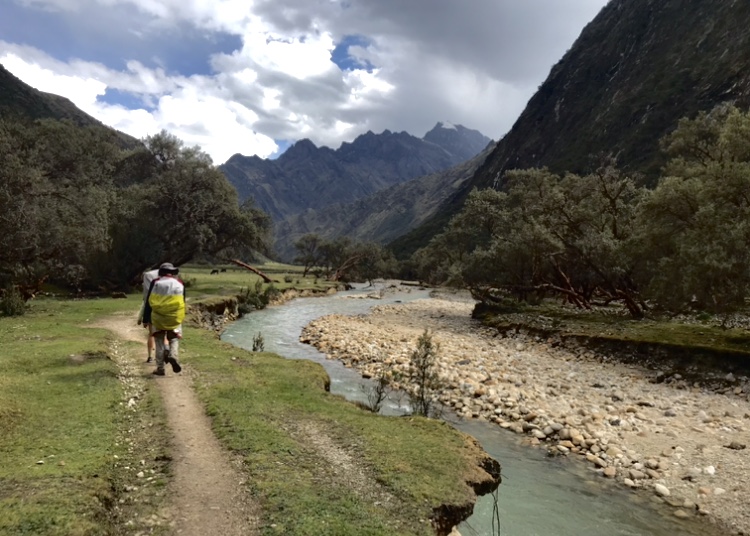
In Lima, we were exhausted from all of the hiking and night bussing, so we could only muster up the energy to explore the city. And as the capital of Peru and the former capital of the Spanish empire in the Americas, there was no shortage of things to do.
We visited a beach, a few churches, and Barrio Chino, or Chinatown. And once we had sufficiently recovered, we decided to exhaust ourselves once again by taking back-to-back night buses, first to the desert town of Nazca, then to Cusco.
The beach in the Miraflores district of Lima.
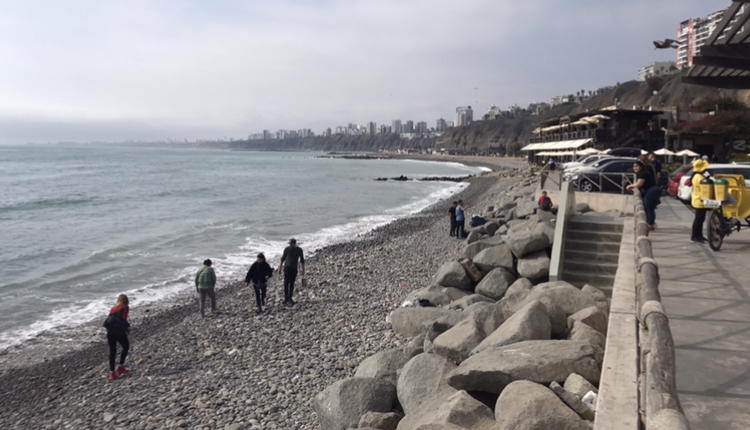
In Nazca, we visited Las Líneas de Nazca, or the Nazca Lines. They are an elaborate network of lines spreading out through the desert in Nazca, built around 2000 years ago by an unknown group of people. And despite being 2000 years old, the lines are incredibly well-preserved, in large part because the desert around Nazca is one of the driest places on Earth!
Some of the lines seemingly stretched endlessly across the desert, while others clearly depicted things like lizards or trees. Even included in the lines is a drawing of a monkey, which is remarkable given that no monkeys are found within a hundred miles of Nazca. Our guide told us that these lines likely served a variety of purposes, from artwork to canals to tracing astrological movements.
A depiction of a tree.
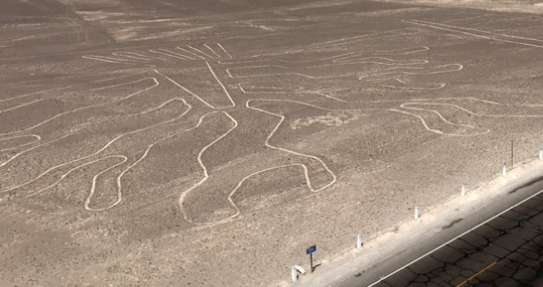
Eventually, the desert sun got too hot for us, and we went back into Nazca to rest and cool off. Soon after, the evening arrived, and we boarded our bus to Cusco.
We spent our first two days in Cusco recovering from taking back-to-back night buses. While resting, I couldn’t help but laugh at the fact that up to this point we had only traveled by night bus in Peru. Our reasoning made sense: the distances here were greater than they were in Ecuador, and night buses were an economical option since we did not need to book a hostel during the nights we were on a bus. And although bus sleep was vastly inferior to bed sleep, spending the night on a bus and then part of the following day resting was still a more economical use of our time than spending all day on a bus then going to sleep soon after arriving.
In Cusco, we spent a number of days exploring the city. Although much smaller than cities like Lima or Trujillo, it is the self-proclaimed cultural capital of the Americas, and has enough museums and artisenal markets to back up the claim.
An old Incan irrigation canal in Cusco.
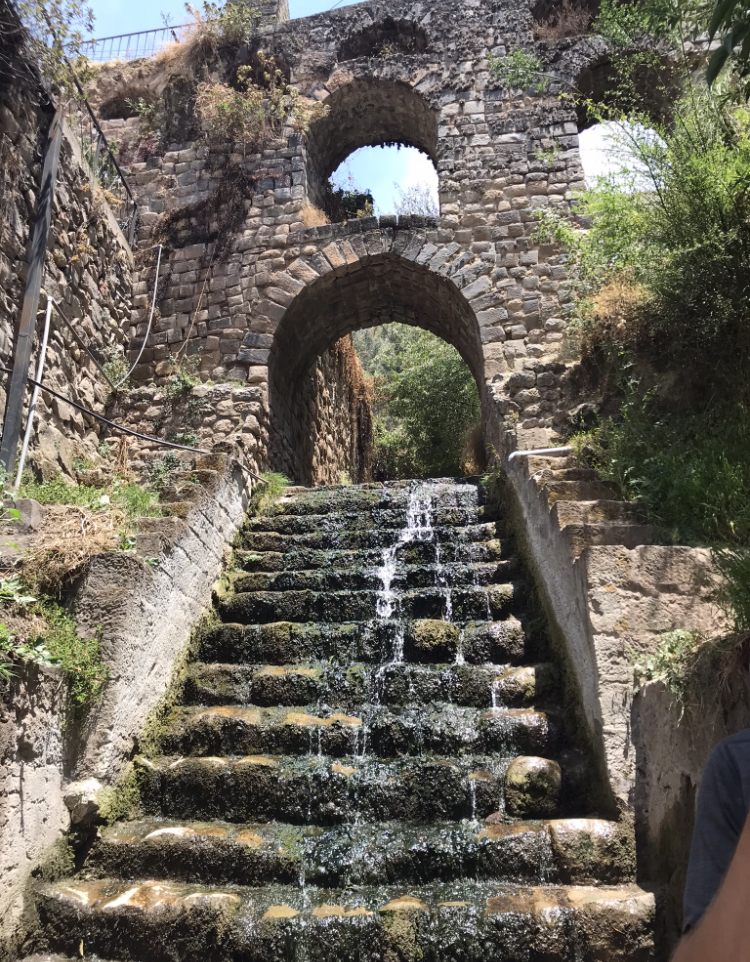
From Cusco, we had initially planned to do the five-day Salkantay Trek to Machu Picchu. But the morning we had planned on leaving, we stepped outside to look for a colectivo out of town, only to find the streets empty of cars. After a bit of asking around, we learned that the transport workers of Cusco had begun an indefinite strike that morning, and that getting in and out of Cusco was nearly impossible. Furthermore, we had made a reservation weeks ago to visit Machu Picchu on November 28th, so our start date for the Salkantay Trek was rather inflexible.
Regardless, the situation was beyond our control, so we could only wait and hope for things to change.
During the day, I met some protestors marching through the streets and asked them about the strike. They told me there were a number of reasons for the strike. Like the rest of the world in 2022, Peru had been battling some pretty serious inflation. The prices of staple foods like rice and pasta were up 30-40% and wages for transportation workers had not risen at all, making many full-time transportation workers food insecure.
Additionally, tourism to the Cusco area was way down, even compared to 2021. This put further strain on locals’ budgets, since there was less money flowing into Cusco’s economy.
And finally, Peru’s then-president, Pedro Castillo, was very unpopular. He had been facing numerous allegations of corruption and incompetence, and almost every Peruvian city I had visited experienced daily protests against his administration. So for many, the strike was also a way of expressing dissatisfaction with the current government.
One of many signs I saw on the streets criticizing the Castillo Administration. A few of the phrases on the sign are: “No more poor people in a rich country” “Robber” “Cusco tells you to get out”
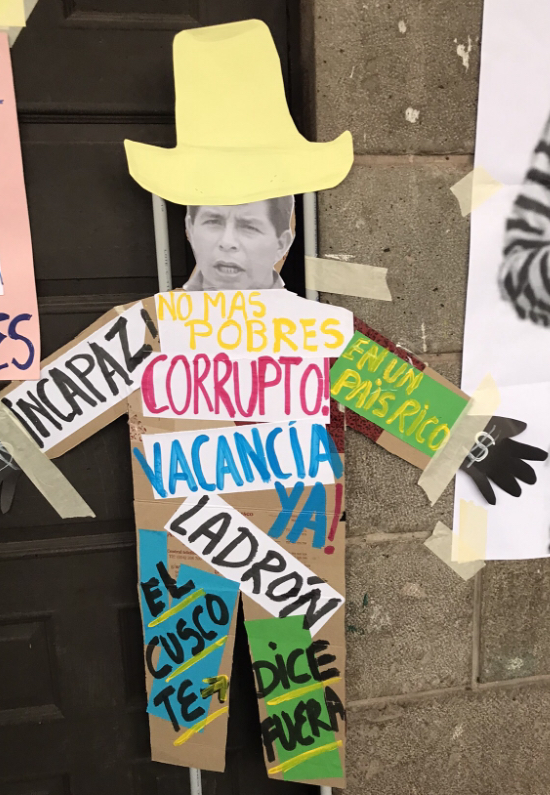
With many legitimate and difficult-to-fix issues driving the strike, it only grew in strength over the course of the day. By the following day, it had grown beyond Cusco and crippled much of Peru’s transportation, forcing the government into negotiations with the strikers.
By the end of the second day, an agreement was reached between the transportation workers and the government, and the strike came to an end. But we were not out of the woods yet. Rumors had begun circulating that the Ministry of Culture was planning to strike on November 28th and close Machu Picchu, the very day we had a reservation to visit!
Not sure what to do, we decided to go to the Ministry of Culture office to ask if we could change our reservation. In typical bureaucratic fashion, they directed us to a different office, which in turn directed us to another office. But in the end, they were able to change our reservation to the 27th.
This did not leave us enough time to do the Salkantay Trek, but at this point, we were just grateful for the opportunity to visit Machu Picchu. The following day, November 26th, we took colectivo to the town of Aguas Calientes, the gateway to Machu Picchu.
Like many prior colectivo rides, this one took all day. We made it to Aguas Calientes right around sunset, checked into our hostel and went to sleep.
The following day we woke up at 4 am to make it in time for our 6 am reservation to visit Machu Picchu. It rained and rained during the whole hike up the mountain, but the sky began to clear right as we arrived.
The sunrise and parting clouds rewarded us with spectacular views of Machu Picchu, making all of the uncertainty we had endured in the previous five days worthwhile. And after enjoying the views, we walked around the ruins and followed some guided tours to learn more about what purpose each sector served. And when we were finally ready to leave, we both agreed that Machu Picchu is well worth the hype.
Our view of Machu Picchu
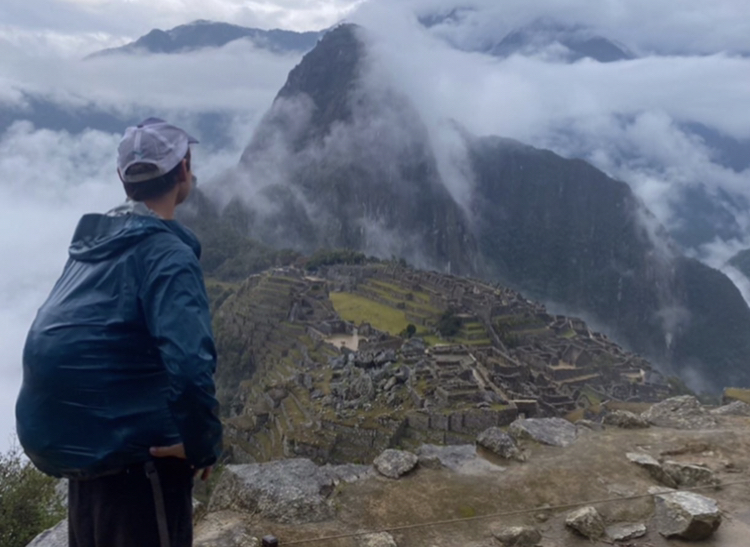
From Machu Picchu, we hiked back to where the colectivos were waiting and then took the long ride back to Cusco. We, once again, arrived exhausted and went to sleep as soon as we arrived. Surely enough, when we woke up the following morning, we saw on the news reports of the closure of Machu Picchu and the Ministry of Culture going on strike.
That night, we took one last night bus to the city of Puno, our final stop in Peru.
Puno sits on the shores of Lake Titicaca, which at an elevation of 12,500 feet is the highest navigable body of water in the world. In typical Peruvian fashion, it also boasts a long history, numerous archeological sites, and a rich cultural heritage.
In Puno, we booked a boat tour to visit two areas of Lake Titicaca: Las Islas de los Uros and Isla Taquile. Both are home to fascinating, but very different, Pre-Columbian cultures.
The Islands of the Uros, also called the Floating Islands, are a group of islands built entirely out of reeds. The inhabitants of the islands, the Uru people, told us that their ancestors lived in the Puno area in the 1300’s. After facing relentless persecution from neighboring groups, they fled to Lake Titicaca, where they built floating islands out of lake reeds, the only building material that occurs in abundance on the lake.
The residents of the islands speak almost exclusively Aymara, with only the younger generations speaking Spanish. They make their houses, traditional boats, and almost everything else on the islands entirely out of reeds. And while historically most of the people of the islands were fishermen, they now also supplement their income by giving tours to tourists like me.
Image of one of the many floating islands. Note: this image is not mine. It is from Wikipedia.
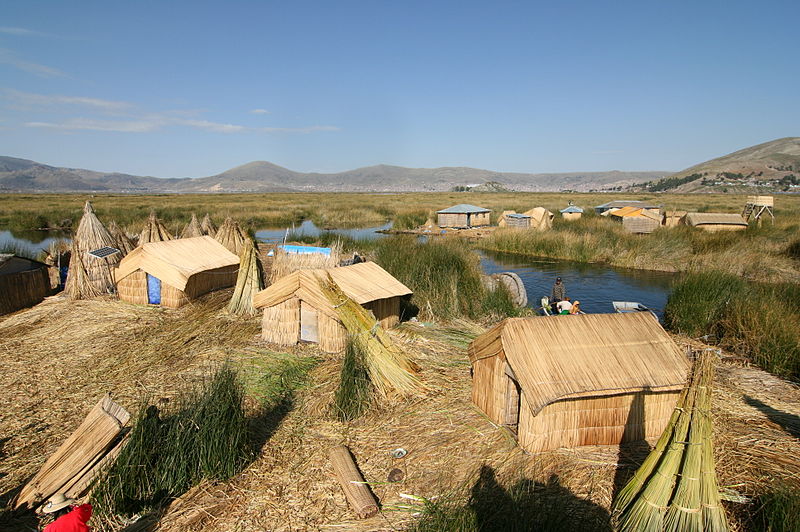
Alternatively, Isla Taquile is a large, naturally-occuring island on the lake. The people here belong to the Taquile culture, and speak Quechua and Spanish.
The residents of Isla Taquile claim to be the only Andean people who still wear their traditional dress during all stages of life. And they showed us all of these clothes, including special hats for married and unmarried men and women and a special belt given from women to men as a marriage proposal made out of a mixture of wool and the maker’s hair. Making clothes and other textiles is a major part of life for the people of Isla Taquile, and their textiles are considered some of the finest in the world. They have even been classified by UNESCO as part of Humanity’s Intangible Cultural Heritage.
We returned from the tour in the evening, and spent the night in Puno. The following day, we took a colectivo to the border, where we crossed into Bolivia.
